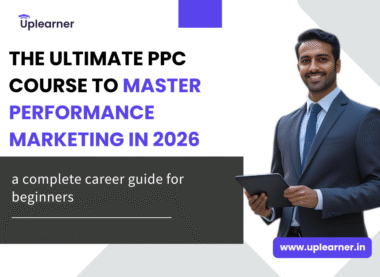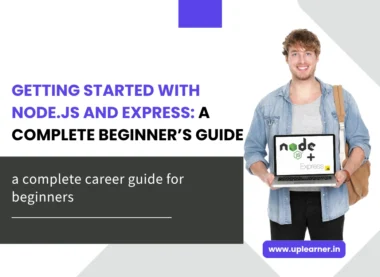Table of Contents
Welcome — this easy guide to SEO will walk you step-by-step from the basics to advanced tactics so you can actually use SEO, not just read about it. If you’ve ever asked how to do SEO and felt confused by jargon, this article is written for you in plain English. I’ll also mention a practical SEO Course you can take later if you want guided practice.
What is SEO — the short answer
Search Engine Optimization, or SEO, means helping your website show up when people search on Google and other search engines. This guide to SEO breaks that down into three simple parts: (1) make content people want, (2) make your site easy for search engines to read, and (3) earn trust from users and other sites. Think of SEO as making your site helpful, fast, and trusted.
Why intent matters more than keywords
People search with intention: they want answers, to buy, to learn, or to compare. Knowing search intent is the first step in this guide to SEO — it tells you what to write. When you learn how to do SEO, focus on matching the page’s content to the searcher’s need, not stuffing keywords. Good content that answers the user’s question will rank better than pages that repeat phrases without meaning.
On-page SEO (content & structure)
On-page SEO means the words and structure on a page. Use clear headings, answer the user’s question early, and use your main phrase naturally — for example, this guide to SEO includes plain explanations and examples. If you wonder how to do seo for a blog, start by writing one clear main idea per page and use related words around it. Short paragraphs, simple sentences, and headings help readers and search engines.
Off-page SEO (links & reputation)
Off-page SEO is about reputation: other websites linking to you, mentions on social media, and trusted citations. Think of links as votes: quality matters more than quantity. When people ask how to do SEO for a new site, earning a few links from good websites beats dozens of low-quality links. Reach out to related sites, share helpful content, and join small communities where your work can be noticed.
Technical SEO (site health)
Technical SEO covers speed, mobile friendliness, and how pages are indexed. Core Web Vitals measure loading, interactivity, and visual stability — these are important for user experience. Fix big speed issues, make pages mobile friendly, and use a simple sitemap so search engines can find your pages. If you are not a developer, using a reliable content management system and a basic speed plugin can help.
Content quality & E-E-A-T (why trust matters)
Search engines look for Experience, Expertise, Authoritativeness, and Trustworthiness. That means if you want to rank, show real experience, add short author notes, use facts, and keep content accurate. This part of the guide to SEO explains why clear writing and real examples help search engines and readers trust your site. Readers prefer honest, helpful pages over salesy or vague ones.
AI content: use it wisely
AI writing tools can help you draft content faster. But using AI is not a shortcut to rank. If you use AI, add your own experience, check facts, and make the content unique. Learning how to do SEO with AI means editing the output and making it personal. Add examples from real projects, screenshots, or step-by-step notes that an AI alone would not provide.
Advanced tactics (practical and simple)
Structured data (schema)
Add simple schema markup for articles, products, and FAQs. Schema helps search engines understand your content and can bring rich results. A short SEO Course can teach you how to add and test schema with Search Console. You don’t need to learn complicated code — many platforms offer plugins that make adding schema easy.
Semantic SEO & topic clusters
Write topic clusters with semantic search in mind: Start with a long pillar page and smaller related posts. This shows search engines you cover a subject in depth and helps semantic search understand relationships between your content. When you learn how to do SEO, think of building a small library of interconnected pages around one main idea. For example, a pillar about “website speed” can link to posts about images, hosting, and caching. Semantic search will recognize these connections and boost your chances of ranking for a wider range of related queries.
Internal linking
Link smaller pages to the big, important pages. Use clear anchor text that tells both users and search engines what the page is about. Internal links pass value and help readers find more answers. A gentle rule: link naturally where it helps the reader.
Measure and iterate
Use Google Search Console and simple analytics to watch impressions, clicks, and top queries. SEO is testing: change one thing, wait, and see the results. Monitoring after updates helps you know what works and what needs fixing. Keep a small log: note the change, the date, and the result — this makes learning faster.
A simple, practical SEO checklist (do these first)
- Pick one primary topic per page and answer it fully. Start your guide to SEO here.
- Check mobile usability and fix big speed issues.
- Write clear titles, meta descriptions, and H1 headings that match user intent.
- Add internal links to important pages and a clear site menu.
- Earn a few quality backlinks by outreach or guest posts.
- Add schema for articles and FAQs where it helps.
- Monitor Search Console, fix indexing issues, and update content regularly.
Tools & learning (where to start)
Free tools: Google Search Console, Google Analytics, PageSpeed Insights. Paid tools: Ahrefs, SEMrush, Moz. If you want structured learning, an SEO Course can help with practical projects. Remember—practice matters more than only watching videos. Try small experiments and keep notes on what changes help. If you can, work on a small site where you can test ideas without pressure.
Quick FAQ
Q: How long before SEO works?
A: Usually months. SEO builds steadily — fix the big problems first (speed, mobile, content), then keep improving.
Q: Can I use AI to write content?
A: Yes — but always edit, add personal examples, and avoid publishing many similar pages.
Q: Where to practice?
A: Make a small website or blog, try the checklist above, and take a short SEO Course to apply lessons.
Final words
This guide to SEO aimed to explain not just what to do but why and how. Bookmark this guide to SEO for quick reference. Use this guide to SEO as a starting point: pick one page, make it helpful, and then repeat. If you want, I can create a 6-month SEO plan for your site showing what content to publish each week and how to track results. Tell me your website and I’ll draft it.







